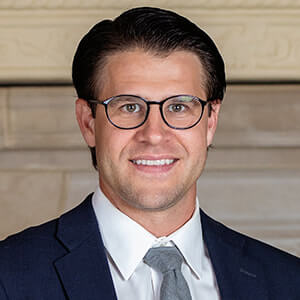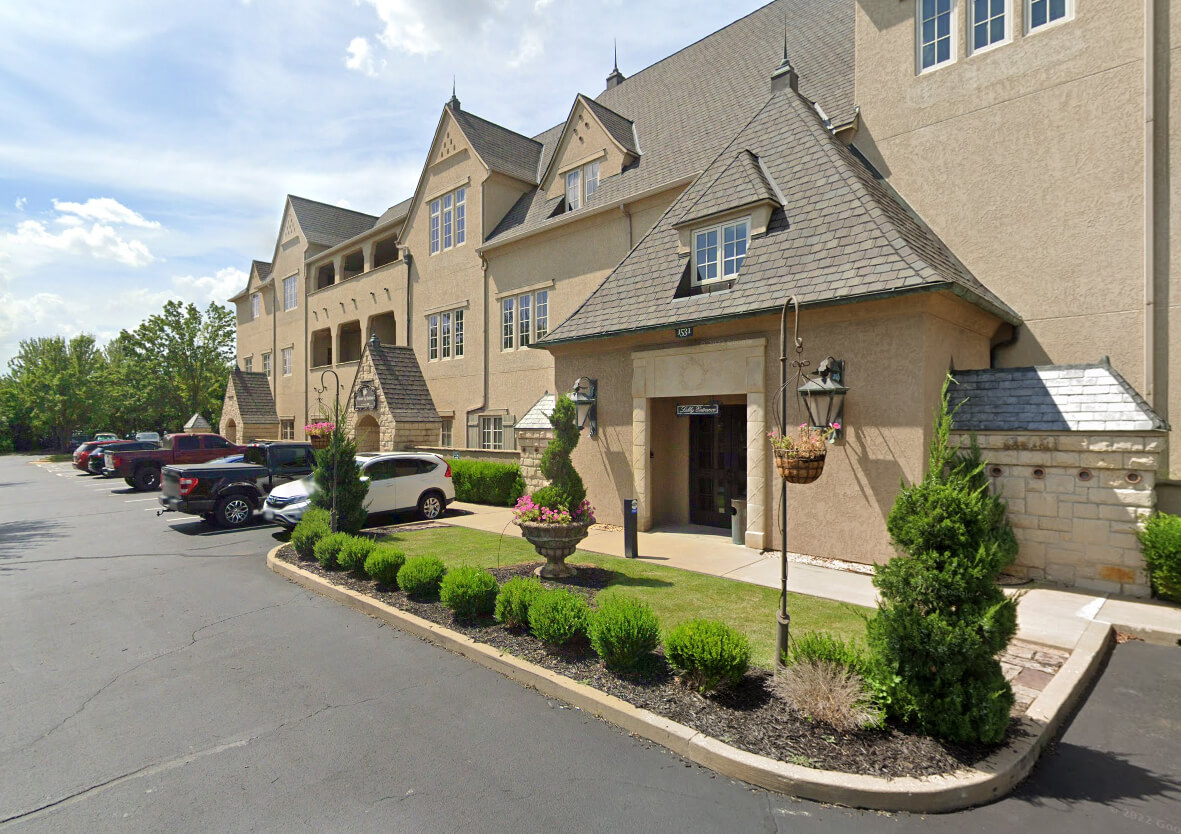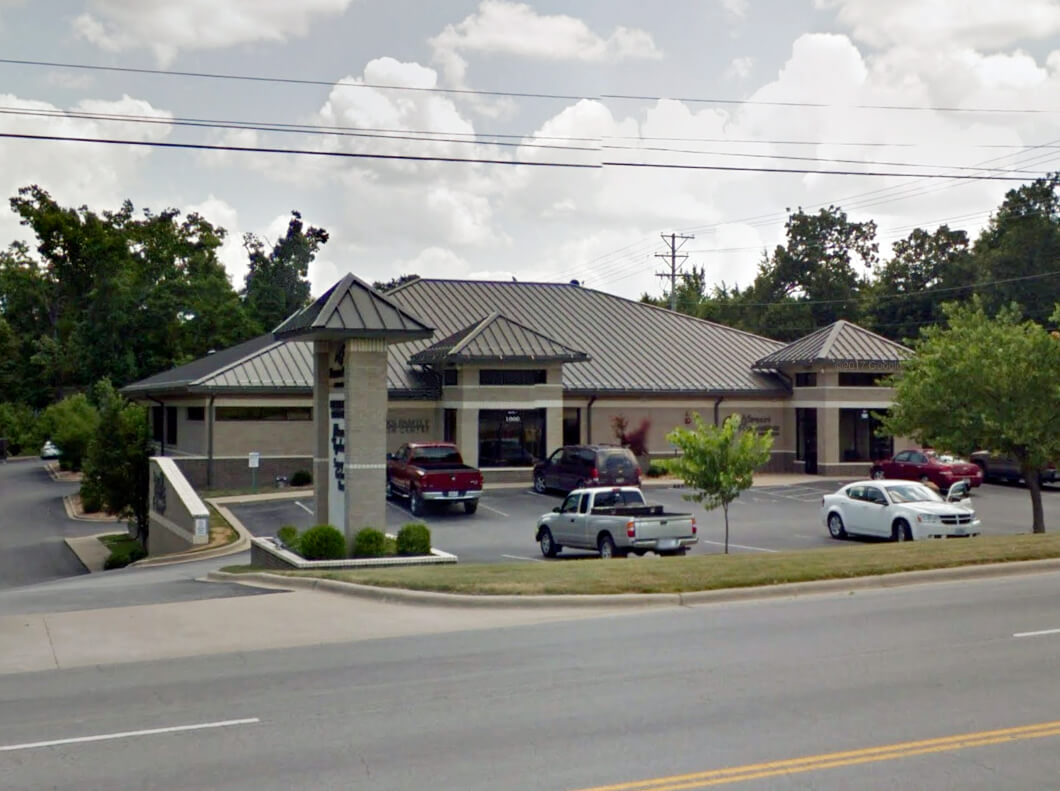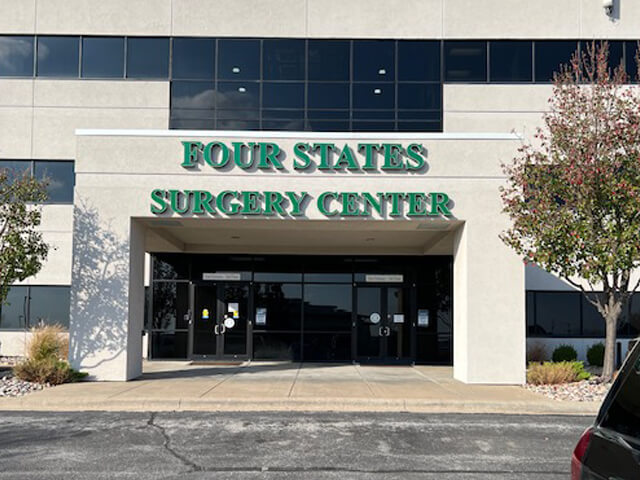Eyelid Surgery
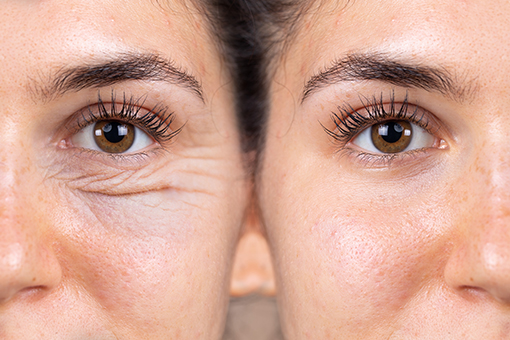
Do you have drooping, sagging brows or severe bags under your eyes? Does excess skin around your eyes impact your field of vision?
You may be a good candidate for eyelid surgery. Missouri Eye Surgery & Laser Centers perform these procedures on many patients to help them look and feel their best.
What is Eyelid Surgery?
Eyelid surgery (also called blepharoplasty) is a surgical procedure to help improve the appearance of sagging, drooping, or puffy eyelids as the skin ages, it loses its elasticity.
When the skin becomes older and loses its elasticity, this can result in excess skin collecting in the upper and lower eyelids. Fatty deposits may appear as puffiness in the eyelids, causing you to look haggard or more tired than you are. Eyelid surgery can help with this and can also help reduce the severity of bags under the eye and help your eyes look younger and more vibrant. Improving the appearance of the eyelids is one way to look younger and more well-rested instantly.
Eyelid surgery can be performed on the upper lids, lower lids, or both. You may also consider undergoing blepharoplasty if you’re experiencing functional problems with your eyelids that make it challenging to see the world around you properly.
Eyelid Surgeries Performed at Missouri Eye Surgery & Laser Centers
There are varying reasons why a patient has eyelid surgery. At Missouri Eye Surgery & Laser Centers, we perform the following eyelid surgeries:
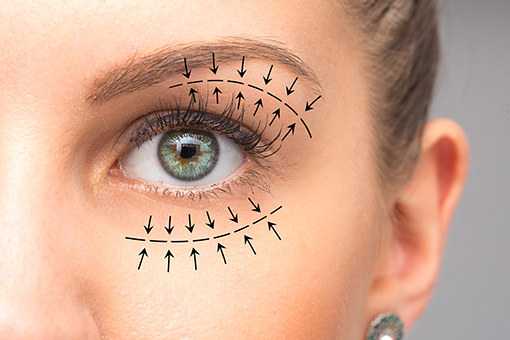
Upper and Lower Blepharoplasty
A blepharoplasty helps improve the appearance of the eyelids, which may sag or droop due to aging. Depending on their desired results, patients can have blepharoplasty on their upper or lower lids.
Upper Blepharoplasty
During an upper blepharoplasty, your surgeon will create an incision on the upper eyelid within the natural crease. Positioning the incision here helps conceal the appearance of any scars, as they are hard to see within the eyelid’s natural structures. After creating the incision, your surgeon may remove fat, any excess skin, tighten muscles, and reposition the skin around the eyelid. Any incisions are closed with sutures or skin glue, with sutures removed within a week.
Lower Blepharoplasty
Our surgeons will perform a lower blepharoplasty on the lower eyelid when necessary. Your surgeon will create an incision right below the lower lash line. They will remove any excess skin or reposition it through the incision. Your surgeon may use an alternative technique by creating a transconjunctival incision inside the lower eyelid. This technique helps correct lower eyelid conditions and can also help redistribute and remove excess fat from the eyelid. Using this technique does not involve removing any skin. After the appropriate amount of fat has been repositioned or redistributed, the incision is closed with sutures or skin glue, and again sutures are removed within a week.
If you’re looking for complete rejuvenation of the eye area, your surgeon may recommend Botox injections to help reduce the appearance of wrinkles, fine lines, and crow’s feet.
Will Insurance Cover Blepharoplasty?
Your blepharoplasty procedure may be covered by insurance if you’re experiencing visual impairment due to drooping or sagging from excess eyelid skin. However, if you undergo blepharoplasty for cosmetic reasons, most insurance plans will not cover it, which is usually the case for lower blepharoplasty, which aims to remove large bags under the eyes.
Although these bags under the eyes are unsightly, they do not obstruct vision. It’s always best to confirm whether your blepharoplasty procedure will be covered by insurance and check with your Missouri Eye Surgery & Laser Centers surgeon first to ensure you’re a good candidate for the procedure.
Ptosis
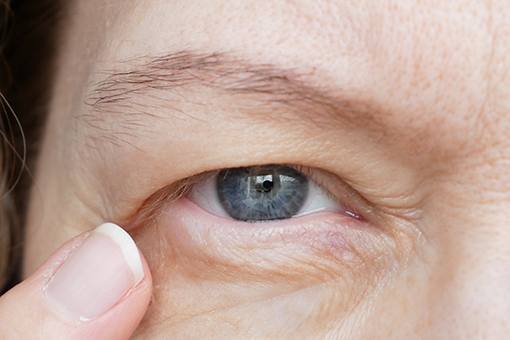
Ptosis is an eye condition that occurs when the upper eyelid droops over the eye. The degree that this happens can vary. The eyelid may only droop slightly, or it may droop enough over the eye that it will cover the pupil. Patients with ptosis may have limited vision.
The condition may also completely block the ability to see normally. Both children and adults can have ptosis. With treatment, vision can be improved, as well as the appearance of the eyes.
Ptosis Repair
Ptosis repair surgery may become necessary if the condition causes issues with the ability to see, appearance, or both. Most people with ptosis have involutional ptosis.
Involutional Ptosis
Involutional ptosis usually occurs due to aging as the tissue that supports the upper eyelid gradually stretches and loses its elasticity. Ptosis repair with involutional ptosis involves tightening the levator muscle. The levator muscle raises the eyelid. To tighten the levator muscle, your surgeon will create an incision in the crease of the upper eyelid. They will place stitches to tighten the levator muscle and raise the eyelid.
Muscular Ptosis
With muscular ptosis, the levator muscle is what’s weak. Muscular ptosis is often seen in children with congenital ptosis, or it can develop later in life in adults with neuromuscular issues. The ptosis repair surgery performed depends on how much muscle weakness there is. If the muscle still functions, the levator muscle is tightened with stitches, and the eyelid is raised. However, if there is poor muscle function, your surgeon may use a frontalis suspension technique. This technique connects the eyelid muscle to the eyebrow muscle (frontalis) with a sling material. Connecting them allows the eyelid to raise and lower using muscles in the forehead.
Ectropion
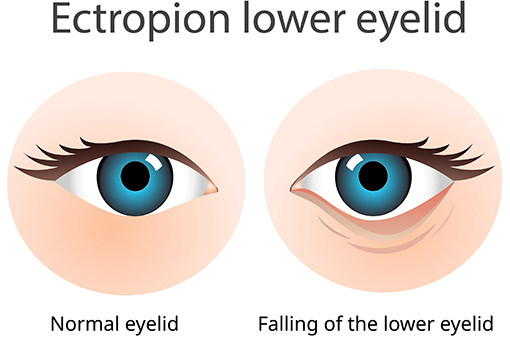
Ectropion is an eye condition that causes the lower eyelid to droop away from the eye and turn out. It mainly affects the lower eyelid and may occur in one or both eyes. Patients with ectropion may suffer irritation as the inside lid rubs against the eye.
Ectropion Surgery
During ectropion surgery, your surgeon will tighten and rotate the eyelid into its natural position. They may repair and reattach tendons and tissues on the outer corner of the eyelid, depending on the cause of ectropion in the patient.
Entropion
Entropion is an eye condition that results in the eyelid turning in toward the eye. It causes the eyelashes and skin to rub against the eyeball, causing discomfort and irritation to the cornea. Entropion is very common in patients over the age of 60.
Entropion Surgery
During entropion surgery, your surgeon will tighten any loose or slipped muscles in the lower eyelid and may remove any excess tissue pushing on the eyelid if it’s present. Depending on what’s causing entropion, they will likely need to tighten the eyelid using a canthoplasty or tarsal strip. A canthoplasty is a cosmetic procedure that reconstructs the eyelid.
Learn more about eyelid surgery and if you could be a good candidate by requesting an appointment at Missouri Eye Surgery & Laser Centers today.





